Inishowen Rivers Trust, Loughs Agency and Heritage Council bring together a workshop to share local Culdaff river stories and history.

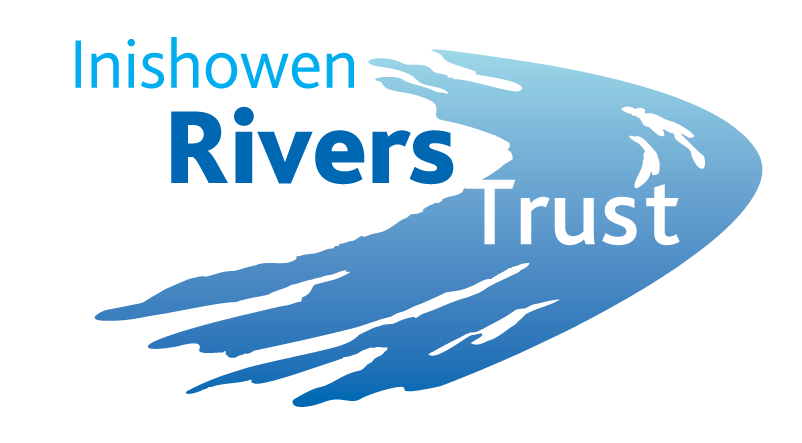
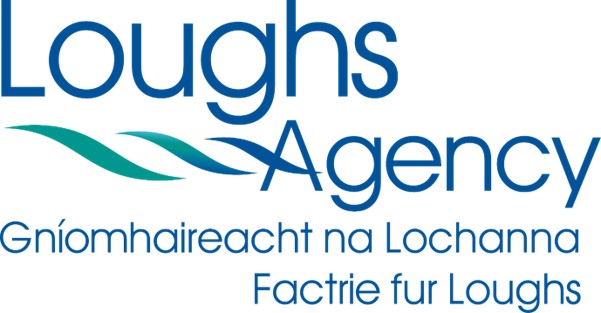
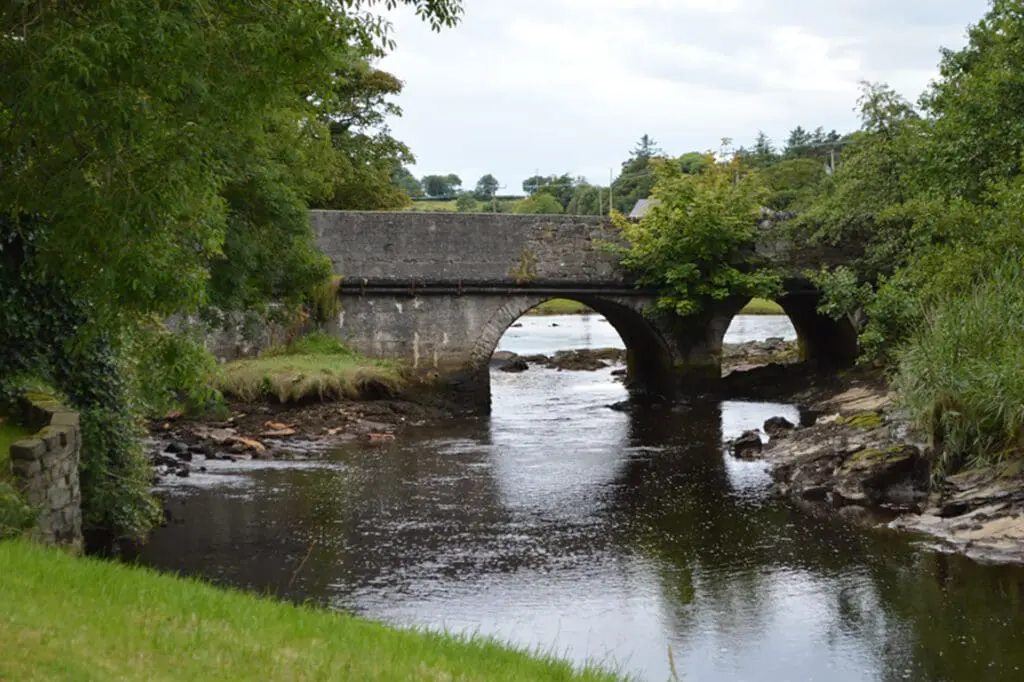
On Thursday 17th August, the Inishowen Rivers Trust, in association with Heritage Council and Loughs Agency, invited the public to The Wee Hall in Culdaff for a workshop on the stories of the Culdaff River. Streamkeeps is the Lough Agency’s community outreach programme for the Foyle and Carlingford areas. The event was to build on relationships people have with their rivers and each other, boosting wellbeing and community links.
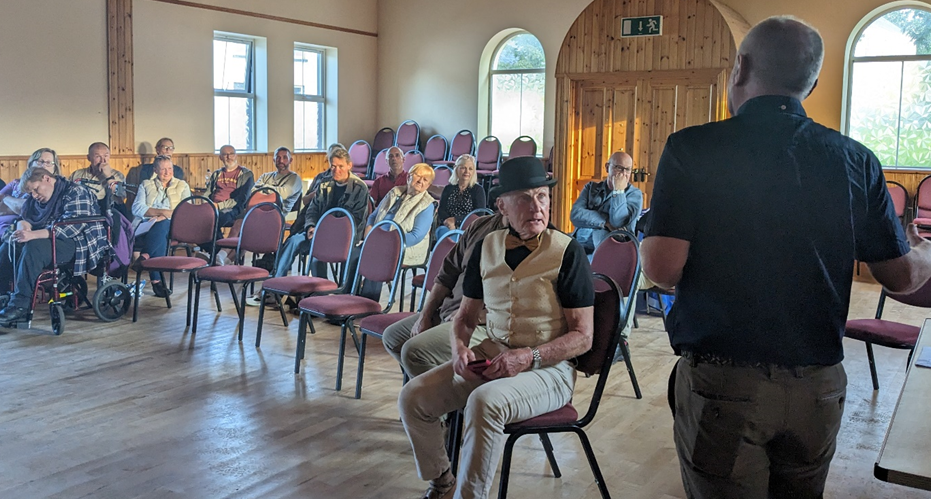
It was a valuable event well attended by the local community and visitors to Culdaff. This workshop provided an opportunity for both locals and visitors to come together and share their stories, historical knowledge, and experiences related to the Culdaff River. The event aimed to strengthen the connection between people and their rivers, promoting well-being and community ties.
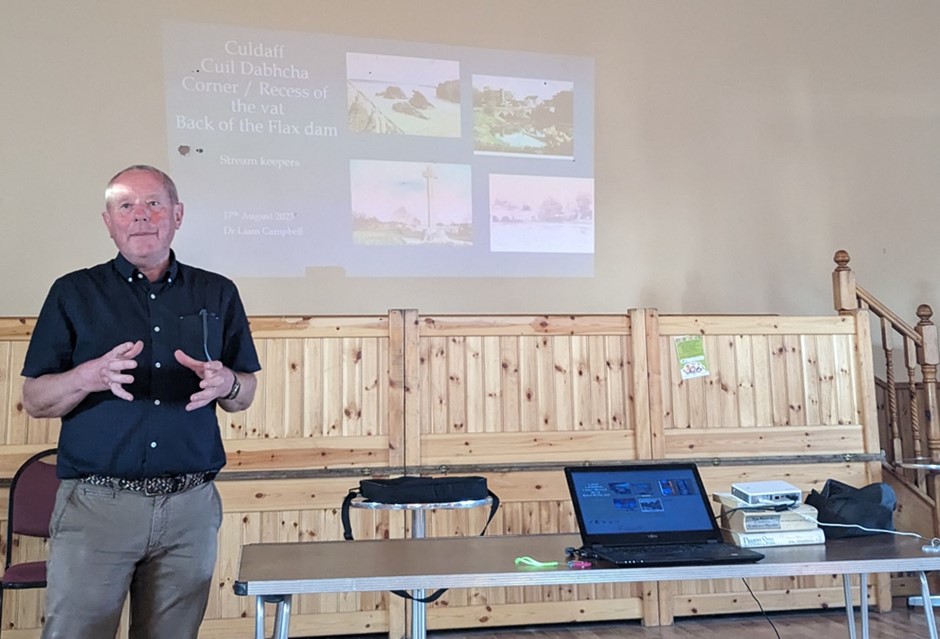
Dr. Willie Bourke from the Loughs Agency and renowned historian Dr. Liam Campbell guided the participants in exploring the rich history and significance of the Culdaff River. The attendees had the chance to learn about various aspects of the river’s history, including early Christian sites along the river, traditional rituals like driving cattle through the river, and the connections between St. Buadan, Colmcille, and the Isles of Scotland. The discussion also covered topics like fishing spawning grounds and spots, with a discussion around Baskill as a salmon spawning ground and Butcher’s Hole a fishing spot at the bridge, previously the site of fish traps in the 1960s by Foyle Fisheries.
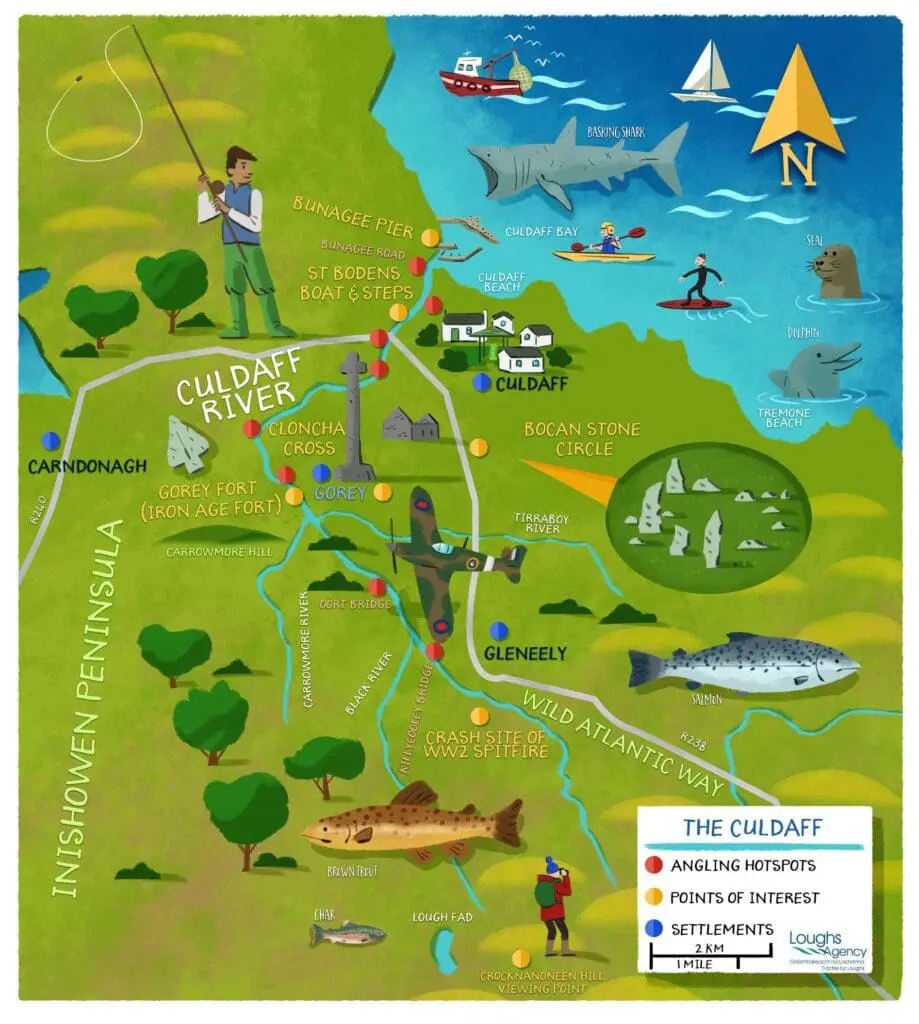
Local historian Sean Beattie and Neil McGrory from the Culdaff and Cloncha Heritage Group were part of the group that engaged in these conversations, contributing their own insights and knowledge. One fascinating historical aspect discussed was the role of the Culdaff River during the clampdown on illegal distillation (poteen making) in the early 1800s, when the river’s location played a part in Red-Coats army camp.
Alison McLaughlin, who has a familial connection to the river through her family’s operation of a corn mill in the early 20th century, shared valuable information about the engineering involved in harnessing the Culdaff River tributary. She also pointed out specific features on a 19th-century map, such as the Mill Race and round planting, which provided further insights into the area’s historical landscape.
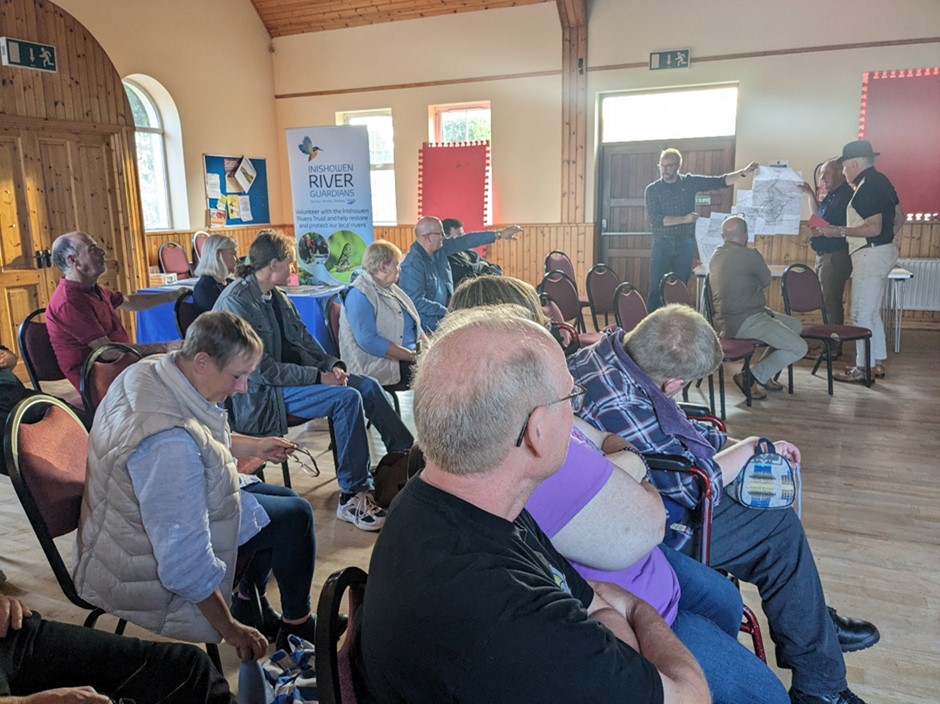
Overall, this workshop served as a platform for locals and visitors to come together, exchange knowledge, and strengthen their ties to the Culdaff River and its history. It’s a wonderful example of how community engagement, storytelling, and historical exploration can contribute to a deeper understanding of a region’s heritage and natural resources.

